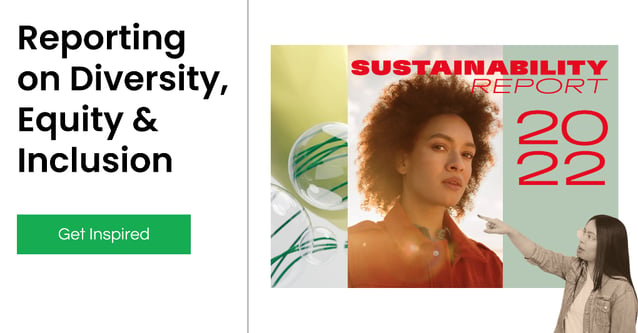The CSRD Requirements: Reporting on Risks & Opportunities

This article was written in collaboration with Sim Hoekstra.
Introduction
The European Corporate Sustainability Reporting Directive (CSRD) will come into effect for large public organisations in 2024 (reporting on 2023 metrics) and will progressively apply to more and more companies over the upcoming 6 years.
With the introduction of mandatory reporting, the European Commission recently published its new reporting standards, the European Sustainability Reporting Standards (ESRS). This standard elaborates on the specific reporting requirements of the directive, and the mandatory disclosure points.
Among mandatory disclosures, the “general disclosures” (ESRS 2) give guidance on the general aspects that all organisations must report upon, regardless of their specific context and material impacts.
The general disclosure requirements can be summarised as follows:
- Basis for preparation;
- Governance;
- Strategy;
- Impact, risk, and opportunity management;
- Metric and targets.
This blog focuses on ESRS 2.4 “Impact, risk and opportunity management”. As the legislative requirements can quickly become complex to understand, we aim to simplify the disclosures and translate them into concrete actions.
Disclosure Requirement 1
The (Double) Materiality Assessment Process
Under the new CSRD, conducting materiality assessments will become mandatory.
A materiality assessment is a process through which a company identifies the environmental, social, governance and broader emerging issues that are most important given the operating context of a business. Material issues have significant implications for organisational risks and opportunities, making them critical elements for decision-making and strategy setting.
Typically, a topic is considered “material” if:
- It is considered to have a significant impact (positive and/or negative) on activities and/or financial performance.
- It is considered important to key stakeholders, including employees, customers, suppliers, business partners, the planet, and society (e.g., citizens, NGOs, and governments).
Disclosure Requirement IRO-1
Description of the processes to identify and assess material impacts, risks and opportunities
The first ESRS requirement is about transparently disclosing the methodology behind the identification of material topics:
- Which stakeholders were involved;
- Which means of data collection were chosen;
- Which assumptions were made.
In this process, some methodological requirements are:
- The choice of potential material topics must be taken from the list of sustainability matters covered in the ESRS 1 Appendix (page 31).
- The materiality assessment must be informed by stakeholder dialogue (e.g., interviews, surveys, expert opinion);
- Double materiality: organisations must not only disclose the impact on people and the planet but also on financial viability;
- A threshold must be applied to determine which material impacts should be reported upon in the annual report (depending on their likelihood of occurrence and the potential size of financial effects);
- Timeframe: organisations must map out risks and opportunities according to their short-, medium-, and long-term effects.
Read more on our “What is Double Materiality & How Does it Fit In With CSRD Requirements” blog here.
Best practice inspiration:
(pages 13-14)
Disclosure Requirement IRO-2
Disclosure Requirements in ESRS covered by the undertaking’s sustainability statements
This requirement is in place to ensure that there is transparency in the disclosure requirements which are reported against. Similar to other reporting frameworks (e.g., GRI, SASB) the ESRS will request a depiction of:
- A list of all the requirements which are reported upon;
- An explanation of the page number and/or paragraph where the related content is covered in the sustainability report;
- A brief explanation of the reasoning behind omissions (e.g., why was a topic not chosen as material).
The most common and recommended way to do so is by providing a content index table at the end of the sustainability report.
Best practice inspiration:
Disclosure Requirement 2
Reporting on Opportunities
On each material topic reported throughout the report, the ESRS requires descriptive information on the current and future opportunities related to this topic. This can be an organisation-specific opportunity or an industry opportunity.
For instance, this can consist of industry developments, new promising innovations, or company-specific circumstances (e.g., new capabilities acquired through a merger, workforce diversification, consumer behaviour change).
For example:
- Organic farming in the agriculture industry;
- Biofuels usage in the logistics sector;
- Blockchain applications for product traceability;
- Carbon capture and storage technologies for carbon management;
- Gen Z entering the workforce fostering a sustainability culture.
In addition, clarity on whether this specific opportunity is currently being pursued must be brought forwards, along with content on whether it makes financial sense to pursue it.
For organisations to prepare themselves for CSRD compliance, we encourage a systematic integration of opportunity thinking in all aspects of sustainability.
This will not only be important to report on industry-disruptive innovations and R&D developments. The adoption of an opportunity mindset for every single material topic will be necessary. For example, what are the current opportunities for:
- Fostering employee well-being;
- Fighting corruption;
- Improving supply chain compliance.
Best practice inspiration:
(page 52)
Disclosure Requirement 3
Reporting on Policies & Actions
This disclosure requirement mandates the reporting of policies and actions regarding relevant material topics identified by an organisation.
These are important, as material topics outline the areas with the highest potential for risk and impact for an organisation and its value chain. Therefore, it is pivotal to have policies and actions in place, as they can help address these risks and impacts.
Policies
A policy transforms the mission and values of a company into a longer-term action plan with qualitative and quantitative objectives.
It outlines measures and steps to achieve these objectives over time, and thus provides internal guidelines for employees and management toward these goals. This also brings insight into the organisation’s strategy.
Disclosing policies demonstrates an organisation’s commitment and long-term objectives to create impact or mitigate the material topics' risks. Thus, overall, it aims to provide a holistic understanding of the formal policy in place, and how it will dictate further actions the organisation plans to take.
To report, it is necessary to describe:
- Key contents of the policy, objectives and which material impacts, risks and opportunities it relates to;
- Policy scope, covering why the policy is relevant and who and what it applies to;
- Roles and responsibilities, meaning the responsible party within the organisation that is accountable for implementing the policy, including management’s approval of the policy implementation;
- Objectives, both qualitative and quantitative.
The quantitative objectives included within the policy should be SMART objectives – Specific, Measurable, Achievable, Relevant, and Time-Bound. This will ensure objectives are focused and relevant and will realistically be able to be achieved in a specified time frame.
Finally, if relevant, consideration given to the interests of key stakeholders in implementing and communicating the policy, such as employees, or suppliers, should be described. If the policy is aligned with any third-party standards or initiatives (such as the UN Global Compact, UN Sustainable Development Goals etc.) this is important to reference.
Best practice inspiration:
(pages 80-83)
Actions
Actions are the translation of an organisation’s sustainability strategy, policy and efforts into the organisation's daily operations.
Actions are broad and can cover most efforts to enhance sustainability within an organisation. This can include anything from implementing waste separation bins in offices, providing training for employees regarding diversity and inclusion, to implementing a supplier code of conduct, to name a few examples.
The disclosing of actions aims to demonstrate how the actions impact or mitigate the material topics' risks and pursue opportunities. Thus, overall, its aim is to provide a holistic understanding of the action being undertaken, and how it contributes to the organisation's policy objectives.
Formalising and keeping track of actions as they are implemented will make disclosing actions, and their key impacts, much easier. overall.
Similarly to reporting on policies, it is essential to provide a key description of the actions implemented in the reporting year, along with expected achievements in relation to policy objectives.
This makes time horizons also important, to understand how the action is expected to unfold over time, and any key milestones and progress expected to be made. Furthermore, it is important to describe the scope of actions, and their coverage across operations or value chains.
Finally, key actions taken, along with results, to support or remedy those harmed by material impacts of the organisation should be distinctly mentioned. Reporting on actions is both a past and forward-looking exercise. Thus, quantitative and qualitative information regarding the progress of actions or action plans disclosed in prior periods can also be reported on.
If there are no policies or actions, it is required to provide reasons for not adopting them. If there are no relevant reasons, organisations may disclose a timeframe within which they will be adopted.
Want to make sure you're fully prepared to comply with the upcoming CSRD? Get in touch.




